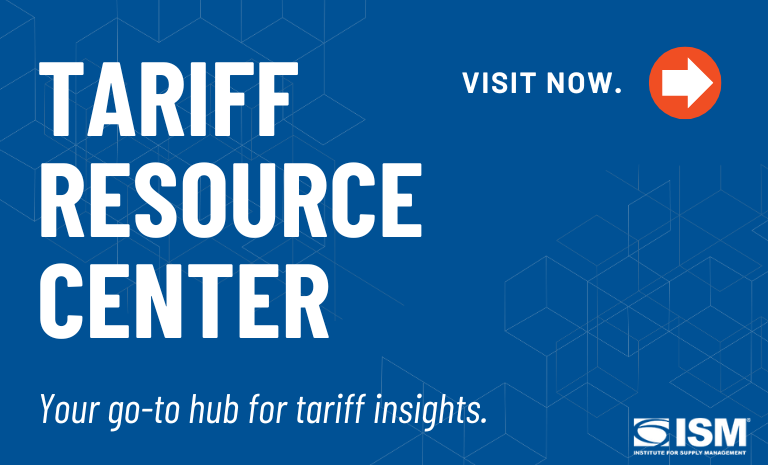In Tariffs Planning, Avoid the Bullwhip Effect With Data Science

The Trump administration’s tariff actions, both actual and threatened, present challenges to U.S. businesses.
There is a lot of FUD (fear, uncertainty and doubt) among CEOs, chief supply chain officers (CSCOs) and other executive leaders who fear that rising tariffs will drive up consumer prices while lowering demand and profitability. There is a real urge to take action now to protect market share and preserve margins.
No matter the latest tariff news, supply chain leaders are advised to avoid overreactions that may lead to a bullwhip effect.
The term comes from how the movements of a whip become amplified from the origin (the hand cracking the whip) to the endpoint (the tail of the whip). Even a tiny variation in the wrist and hand of the person wielding the whip can have a much larger effect on the force of the blow the whip administers on the other end.
For example, the bullwhip effect happens when a retailer changes how much it orders from its supplier, based on short-term changes in consumer demand. Seeing an increased demand signal from its customer(s), the supplier, in turn, submits a larger-than-usual purchase order to its manufacturer.
However, due to lead times, minimum order quantities and more, the retailer’s increased order to the supplier is magnified into a larger order from the supplier to the manufacturer. When consumer demand inevitably corrects back to the original value, the supply pipeline is stuffed with excess inventory, raising days of supply (DOS) and tying up working capital.
Any small overcorrection by the retailer can lead to massive discrepancies between demand and production, with far too much being produced, then far too little being produced, as retailers slash order quantities to sell down existing inventories.
A bullwhip happened during the coronavirus pandemic, when businesses overreacted and ordered too much inventory, particularly from Chinese manufacturers. It happened again in fall 2024, when companies rushed to increase inventories before the anticipated International Longshoremen’s Association (ILA) dockworkers’ strike. When the strike was averted, companies, including Target, were left with excess inventories, which hurt financials.
Executive Concerns
When thinking about tariff rollouts, the most common C-suite question is: “What do we do now?” Opinions vary, depending on the source. There certainly is no shortage of advice coming from the internet. A quick Google search of “actions a business should take now to mitigate the effects of the Trump tariffs” revealed more than 46 million responses.
Critical questions related to tariffs and their potential impact on business include:
- How will tariffs affect supply chains and sourcing?
- Should we evaluate substitutions for raw materials, packaging and more?
- Will product pricing require recalibration? And, if so, how will market share and profit margins be affected?
- Should global tax strategies be evaluated? Is it time to look for new acquisitions, mergers or strategic partnerships?
- Should inventory be ramped up or reduced?
- Will employee staffing levels have to be adjusted?
The volatility surrounding tariff rollouts has made it difficult to determine actions to take. Any plans must also consider the related impact of possible retaliatory tariffs.
Data Science Methods Can Help
Fortunately, a data-driven approach can provide business leaders with direction and answers. Such data science methods as simulation analysis, scenario analysis and data visualization can help supply chain leaders to evaluate possibilities and devise appropriate action plans.
Data visualization is the process of transforming data into visually appealing and easily understandable formats like charts and graphs, often color-coded, to facilitate analysis and communication. The information helps identify patterns, trends and outliers in large data sets, making it easier to gain insights and make informed decisions.
Scenario analysis is a process of examining and evaluating potential events and their possible outcomes. It helps businesses and individuals predict how different conditions might impact their finances or operations by considering alternative scenarios. As an example, scenario analysis might consider: If the U.S. and China decide to keep tariffs at a mutual 45 percent, what will be the necessary adjustments? Another scenario might analyze changes required if the tariffs were dropped to 10 percent.
Simulation analysis can be thought of as scenario analysis — but turbocharged. Instead of looking at a few different scenarios, simulation allows an executive team to evaluate a vast number of potential inputs — like tariff ranges, pricing adjustments and demand destruction potential — and evaluate key outcomes: revenue, inventory and profit. While the most complex of the three methods, simulation analysis enables the company to identify the optimum changes required for generating target outcomes.
As part of a cross-functional team, these analytical tools can be used to postulate among potential scenarios to (1) estimate demand destruction, (2) guide pricing policies and (3) inform decisions on production levels and inventory management. In short, those tools assist leaders in evaluating options and making the right decisions to mitigate loss while maximizing profits.
***
While it is prudent that businesses formulate tariff contingencies, planning should involve a data-driven approach to prevent any bullwhip effect and excess inventory. Analytical tools can guide business leaders as they reevaluate everything from supplier relationships to supply chain network design.

